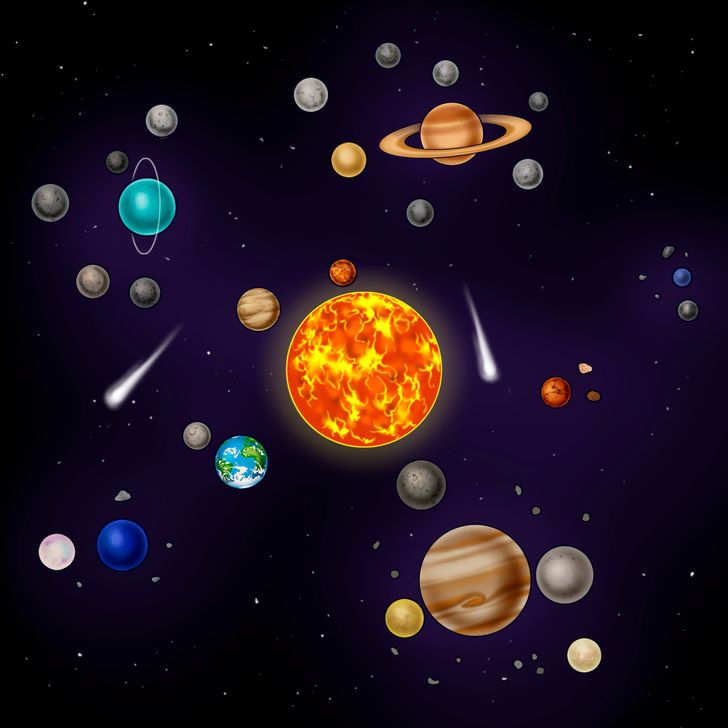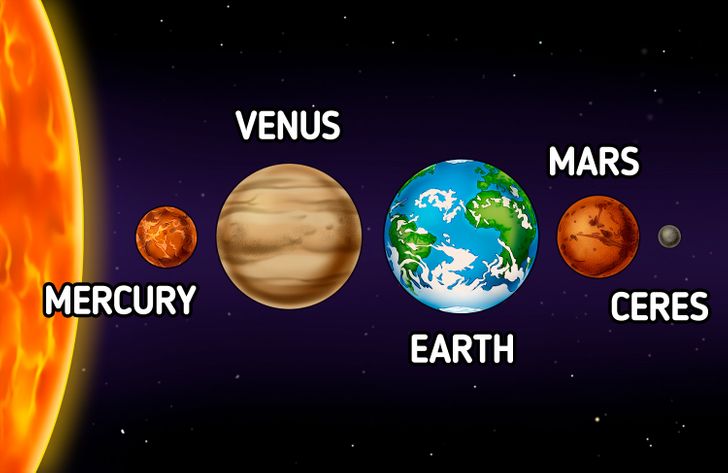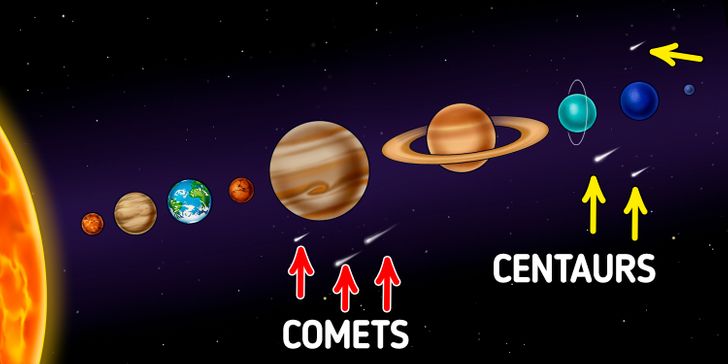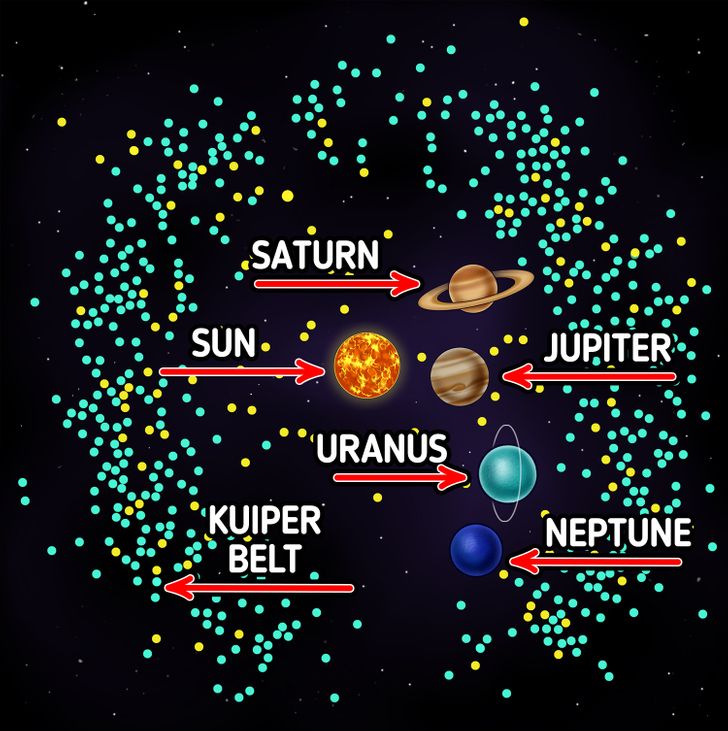What Our Solar System Looks Like in Reality
We’ve all known what our solar system looks like since school: the sun and 8 planets. However, many of us also remember Pluto as one of these planets, but it was excluded from the list in 2006. And we rarely think that our solar system, in fact, has a much wider variety of objects in it.
At 5-Minute Crafts, we’ve prepared a small excursion, far beyond Earth, to figure out what our solar system looks like in reality.

There are a lot of large and small objects within our solar system, and it would be extremely difficult to list all of them, even if we decided to write a multi-volume book set about it. However, the solar system has 3 main parts, the inner region, the outer region, and the trans-Neptunian objects. Let’s talk about each of them separately.
The inner region

This region includes the so-called terrestrial planets: Mercury, Venus, Earth, and Mars, their satellites, asteroids, and the dwarf planet, Ceres. By the way, asteroids (small celestial bodies without their own atmosphere) are the most common objects in the solar system. Ceres is located between Mars and Jupiter. It’s much smaller than our Earth: its surface area can be compared with the area of Argentina.
The outer region

The outer region has a much wider range of objects than the inner one. There are giant planets, including Jupiter, Saturn, Uranus, and Neptune, their satellites (Saturn has 83), comets, and centaurs. Comets are familiar to us: these are small solar system bodies a few miles across, consisting of volatile substances, such as ice. And centaurs are a group of asteroids that are located between the orbits of Jupiter and Neptune, and they look like both asteroids and comets at the same time.
What’s next, you ask?
The trans-Neptunian objects

Roughly speaking, the trans-Neptunian objects belong to the outer region of the solar system. The space beyond Neptune hasn’t yet been sufficiently explored, but it’s known to include the Kuiper belt, Pluto, and celestial bodies similar to dwarf planets. The Kuiper Belt is composed largely of ice shards that have survived since the formation of the solar system. They are located between 30 and approximately 50 astronomical units from the sun. Some of them are quite large and even have their own names: Quaoar, Varuna, and Orcus. Additionally, there are a few dwarf planets in the trans-Neptunian region, like, for example, Haumea, Makemake, and Eris.
We and our descendants still have a lot to learn about our solar system, and perhaps someday we’ll even get to its edge and go further. And maybe even tomorrow a research spacecraft will transmit new revolutionary information to Earth, and if so, our article will be supplemented with some new facts.